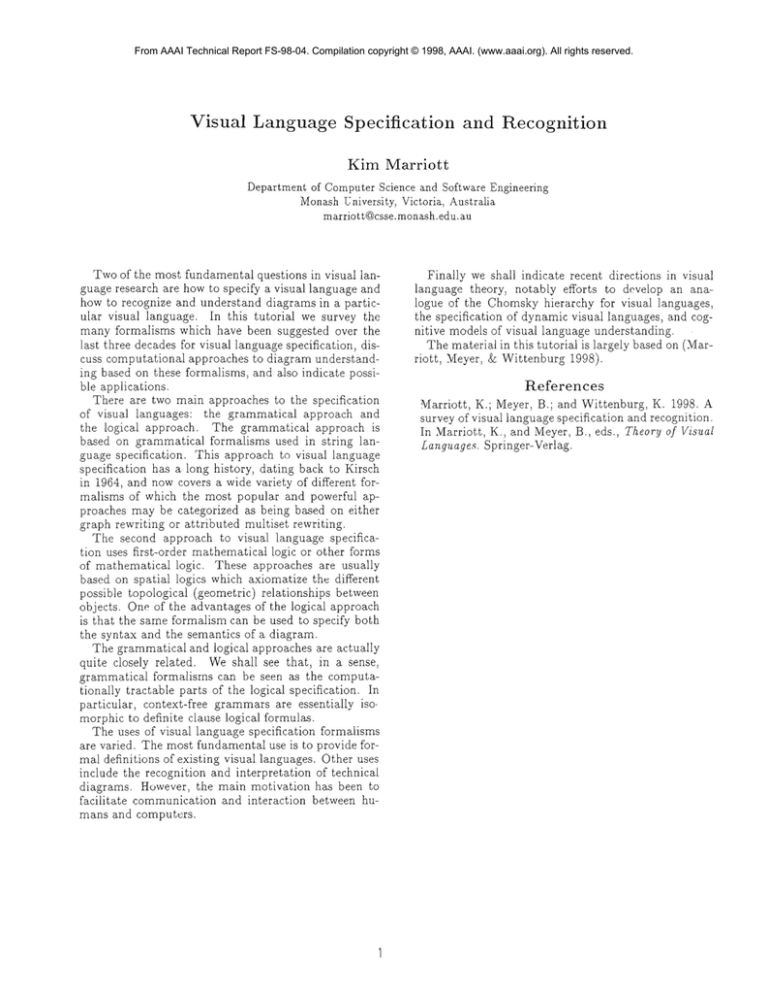
From AAAI Technical Report FS-98-04. Compilation copyright © 1998, AAAI. (www.aaai.org). All rights reserved.
Visual Language Specification and Recognition
Kim Marriott
Department of Computer Science and Software Engineering
Monash Gniversity, Victoria, Australia
marriot t@csse.monash.edu.au
Two of th e most fundamental questions in visual language research are how to specify a visual language and
how to recognize and understand diagrams in a particular visual language. In this tutorial we survey the
many formalisms which have been suggested over the
last three decades for visual language specification, discuss computational approaches to diagram understanding based on these formalisms , and also indicate possible app lications.
There are two main approaches to the specification
of visual languages: the grammatical approach and
the logical approach. The grammatical approach is
based on grammatical formalisms used in string language specifi cation. This approach to visual language
specification has a long history, dating back to Kirsch
in 1964 , and now covers a wide variety of different formalisms of which the most popu lar and powerful approaches may be categorized as being based on either
graph rewriting or attributed multiset rewriting.
T he second approach to visual language specificat ion uses first-order mathematical logic or other forms
of mathematical logi c. These approaches are usually
based on spatial logics which axiomatize the different
possible topological (geometric) relationships between
objects. One of the advantages of the logical approach
is that the same formalism can be used to specify both
the syntax and the semantics of a diagram.
The grammatical and logical approaches are actually
quite closely related. We shall see that, in a sense,
grammatical formalisms can be seen as the computationally tractable parts of the logi cal specification. In
particular , context-free grammars are essentially isomorphic to definite clause logical formulas.
The uses of visual language specification formalisms
are varied. The most fundamental use is to provide formal definitions of existing visual languages. Other uses
include the recognition and interpretation of technical
diagrams . However , the main motivation has been to
facilit ate communication and interaction between humans and computers.
Finally we shall indicate recent directions in visual
language theory, notably efforts to develop an analogue of the Chomsky hierarchy for visual languages,
the specification of dynamic visual languages, and cognitive models of visual language understanding.
The materi al in this tutorial is largely based on (:vIarriott , :Yleyer , & Wittenburg 1998).
References
;ylarriott, K .; Meyer, B.; and Wittenburg, K. 1998. A
survey of visual language specification and recognition.
In :vIarriott , K., and Meyer , B. , eds., Theory of Visual
Languages. Springer-Verlag.






